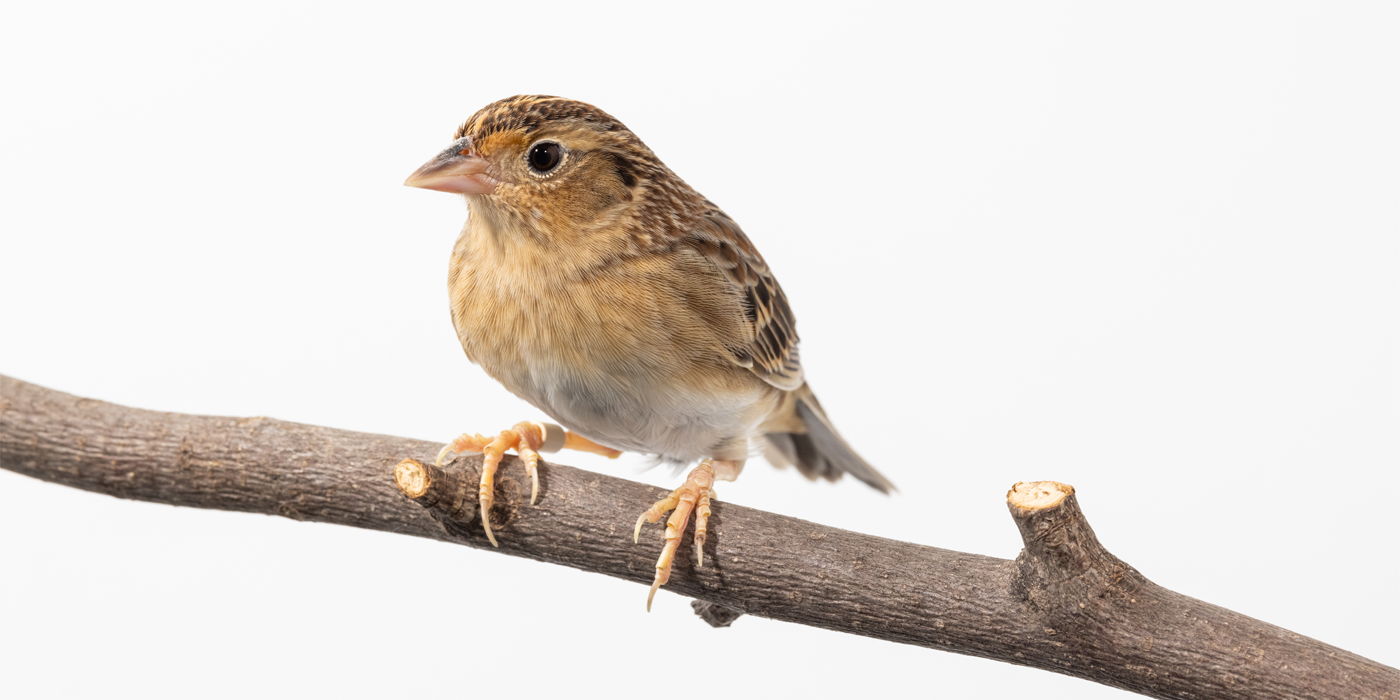Physical Description
The grasshopper sparrow is a small, easily overlooked grassland sparrow. It has a short tail, a thick neck and a flat head with a deep bill. It also has a cream-colored breast, whitish lower breast, a dark crown divided by a pale buffy-white crown stripe. There are twelve identified subspecies with varying coloration.
Size
Native Habitat
Grasshopper sparrows are found in grasslands, open pastures and hayfields. They avoid extensive shrub cover, preferring to stick to large, open fields.
They breed across the grassy plains and prairies of central and eastern North America. Most spend the winter in the southern United States, Mexico, Central America and the Caribbean.
Lifespan
Communication
Food/Eating Habits
This sparrow searches the ground for insects, often choosing to eat grasshoppers, beetles, caterpillars and other insects. When hunting large grasshoppers, they immobilize prey by grabbing it behind the head and shaking the legs off one pair at a time before eating or feeding their young.
In the winter, they eat seeds from wild grasses and weeds, as well as dropped grains from farm fields.
Sleep Habits
Social Structure
Reproduction and Development
Males and females pair up during the breeding season. After pairing, the female builds a cup-shaped, domed nest on the ground that is usually woven into the base of a grass clump or shrub, with the entrance on the side of the nest. Adults rarely fly directly to the nest; rather, they land a short distance away and run to it. They also, when leaving the nest, run a distance away before flying. They will use a broken wing display to lure predators away from the nest.
Females lay from three to seven eggs, colored a creamy white with reddish brown speckles. Only the female incubates the eggs. Chicks hatch after about 11-13 days of incubation. Both males and females feed the young. Pairs may have two clutches a season. A new nest is built for the second clutch.
Nestlings leave the nest six to nine days after hatching. They are not good fliers at that time and run from the nest rather than fly. They disperse from the nest area immediately. Parents continue to feed fledglings for an undetermined amount of time.
Conservation Efforts
The grasshopper sparrow is commonly found but in steep decline. It has lost 68 percent of its population since 1970, mostly due to the loss and fragmentation of its grassland habitats. One subspecies, the Florida grasshopper sparrow, is highly endangered. However, they respond well to sustainable land management practices such as delayed mowing, managed grazing and prescribed burning.
Help this Species
Reduce, reuse and recycle — in that order! Cut back on single-use goods, and find creative ways to reuse products at the end of their life cycle. Choose recycling over trash when possible.
Be a smart consumer. Choose products made with sustainable ingredients, such as Smithsonian certified Bird Friendly coffees, which support farmers striving to limit their impact on wildlife and habitat.
Be a responsible cat owner, and keep cats indoors or under restraint when outside. Never release animals that have been kept as pets into the wild.
Support organizations like the Smithsonian’s National Zoo and Conservation Biology Institute that research better ways to protect and care for this animal and other endangered species. Consider donating your time, money or goods.
Conservation starts with you! Join a citizen science project where you can help collect valuable data for scientists. Encourage your friends and family to get involved too.
Less is more. Cut down on the demand for resources by consuming less. Buy only what you need, and look for pre-owned or repurposed items before purchasing something brand new.
Smithsonian's National Zoo and Conservation Biology Institute. (n.d.). Grasshopper sparrow. Retrieved December 1, 2025, from https://nationalzoo.si.edu/animals/grasshopper-sparrow
Animal News

Giant Panda Qing Bao Gets a Checkup ›

7 Spooktacular Animal Facts for Halloween ›

